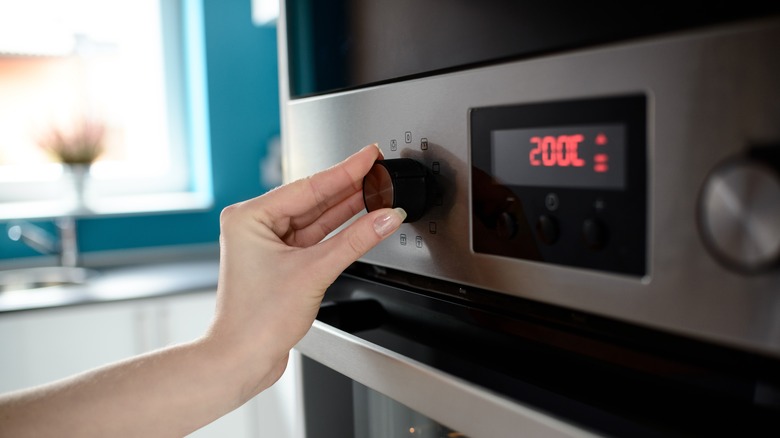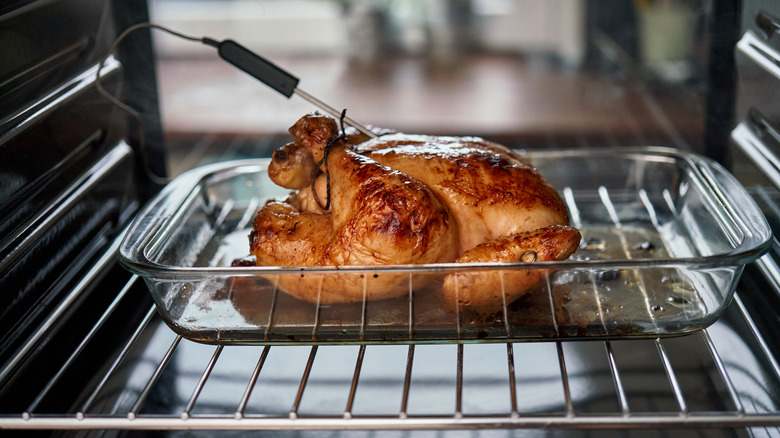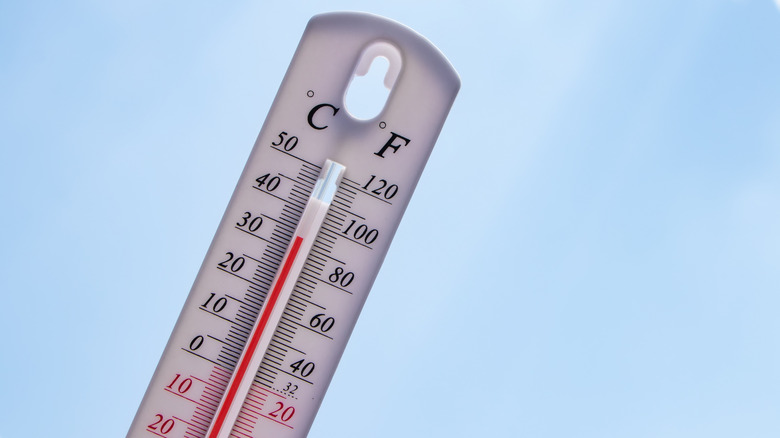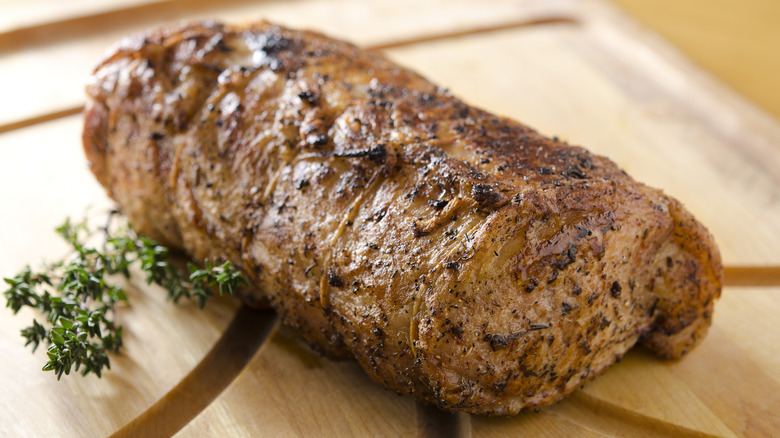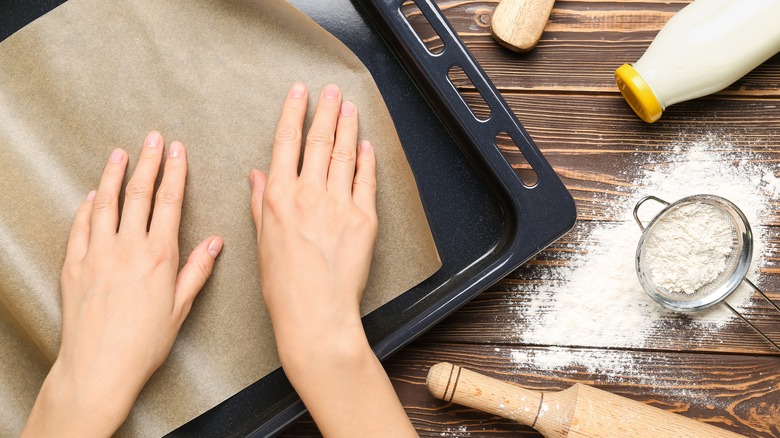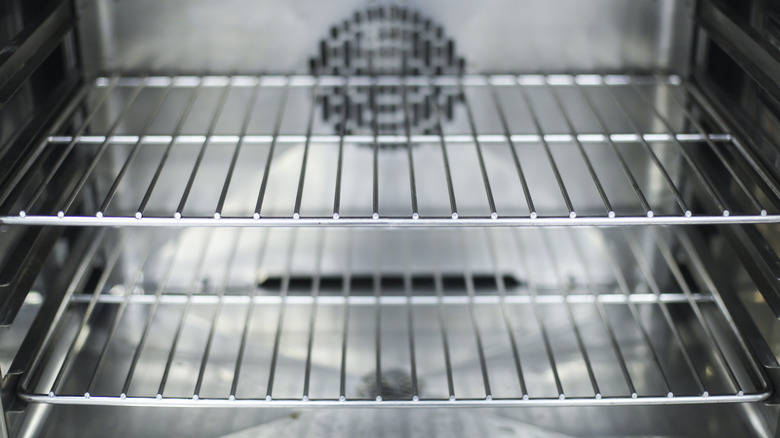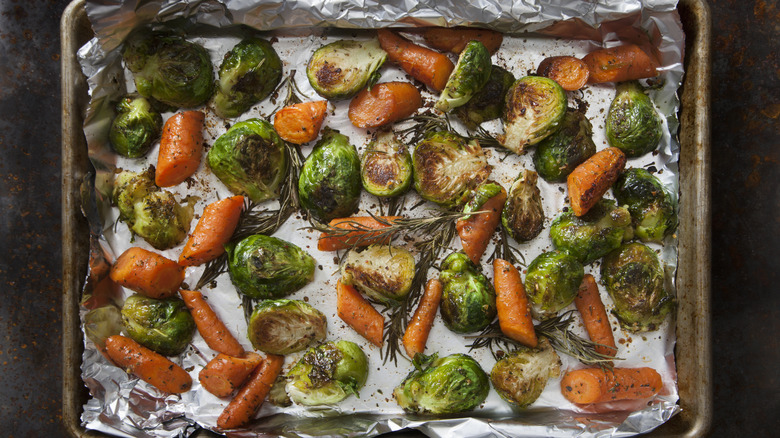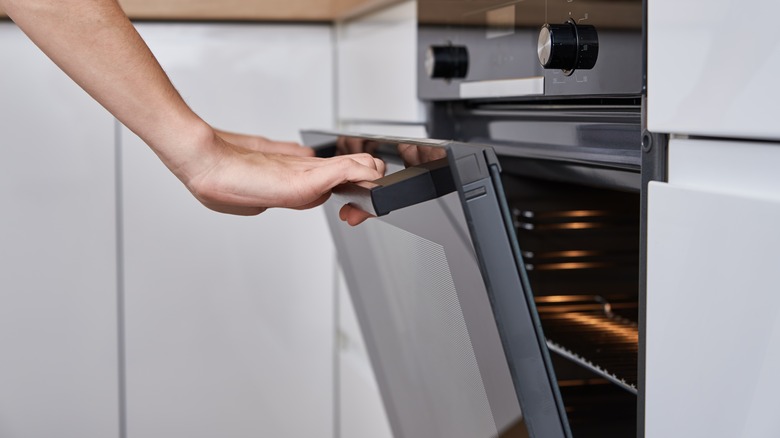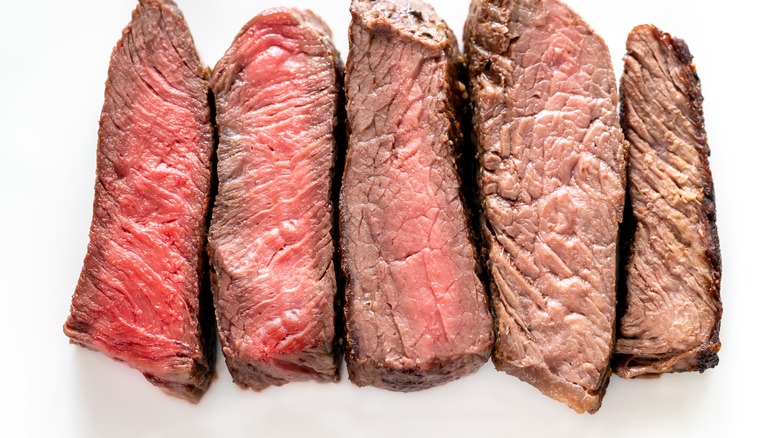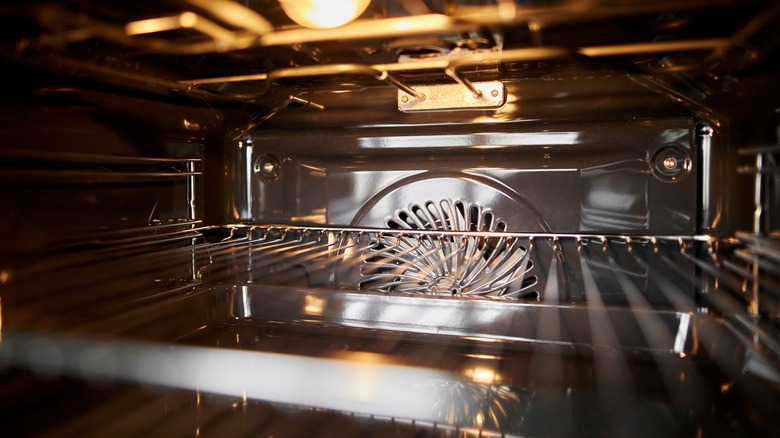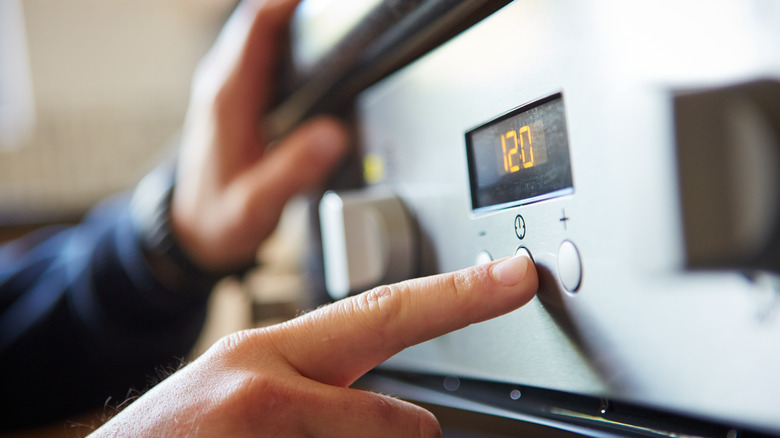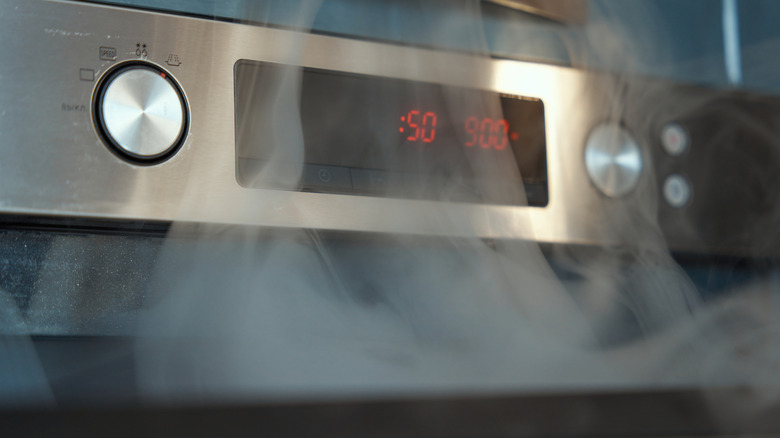Tips For Adjusting Your Oven Temperature Based On What You're Cooking
Mastering the art of temperature control is a crucial step in preparing any meal. It's the key to achieving that perfectly cooked steak, that lighter-than-air souffle, and those brownies baked to fudgy perfection. Each of these culinary delights demands your careful, sometimes meticulous, attention to temperature control.
Controlling oven temperature, whether in a traditional or modern convection oven, is a common challenge for many home cooks and chefs. Even convection ovens, touted for their even heating, have quirks, with hot and cold spots, complicating what should otherwise be a straightforward exercise.
The variation in temperature gauges among manufacturers can also throw off your cooking. Throw in the fact that, to simplify matters, recipes often provide only approximate temperature settings based on generic benchmarks, and you'll find that some of the temperature variations you face can be pretty severe. But don't be discouraged; you're not alone in this challenge. Here are some practical ways to master your oven's temperature, thus unlocking the potential to create genuinely stunning culinary masterpieces.
A quick guide to food temperatures
Your oven's temperature range contains a spectrum of cooking possibilities. It typically spans from a cozy 170 degrees Fahrenheit to a fiery 550 F. If you're lucky enough to have a warming drawer, you can even go as low as 120 F. But the truth is that most of your cooking adventures will occur in the middle of this range, around 350 F — which sits just above the point where the magic of the Maillard Reaction begins to take effect.
Of course, the temperature setting is there for a reason; some ingredients prefer things a little bit toastier, while others like to chill out in the shade. Pizzas, like things hot, are way hotter than most wall ovens can manage. Still, cranking up to 550 F and placing the dough on a pizza stone produces fantastic results. Suppose you want to roast vegetables to golden perfection. In that case, you should aim for somewhere between 425 F and 450 F, but for deliciously jammy slow-roasted tomatoes, a comparatively chilly 275 F will do the trick nicely.
Slow-roasted meats are at the bottom of the scale, often cooked at temperatures as low as 140 F — if your oven can manage it — but for extended periods. At such temperatures, there is no Maillard reaction — so don't expect any browning — but it still produces exquisitely tenderized meat.
The Fahrenheit Celsius constant
The metric system is fairly ubiquitous and used almost everywhere except in the United States and a few islands around the globe. Drawing inspiration from overseas recipes is far from uncommon in an increasingly connected world. When that happens, the need to convert from Celsius to Fahrenheit — or vice versa — comes into sharp focus.
The problem is that humans prefer to think in whole numbers, and recipes tend to reflect that reality. For example, a U.K. cookie recipe that suggests 180 degrees Celsius as the optimal temperature for baking cookies would convert to 356 F. Conversely, a U.S. recipe that advocates 350 F as the butter zone for soft, chewy, delicious cookies converts to 176 C.
Two questions spring to mind then. First, does the differential of a few degrees make any real difference, and second, what should be done if so?
The answer to the first question is relatively straightforward. It makes a difference. Cookies might not be overly sensitive to such slight variations, but other items are. And while a direct conversion is unlikely to ruin your dish outright, the simple truth is that Fahrenheit is the more accurate of the two scales — at least, it is when it comes to cooking. Overcooking food often results in burning, so when converting from Celsius to Fahrenheit, it's best to round down, not up. This might result in slightly longer cooking times, but the wait is probably worth it.
Carryover cooking
It's a fairly obvious point that food does not simply stop cooking because you have hit the power switch on your oven. Of course, the oven is still warm, which can be a good thing — more on that later — but the food keeps cooking even once you take something out.
This idea of carryover cooking isn't restricted to ovens — slightly undercooking grilled food is a common enough practice, after all — and resting pasta is part of the al dente experience. However, when combined with the generally fickle nature of ovens, giving room for food to rest becomes even more critical.
Several factors affect how much carryover cooking is likely to occur. The shape and size of the food play a part, as does the temperature at which it is cooked. For example, in an experiment carried out by ThermoBlog, a half-pound beef chunk cooked at 300 F and pulled at 140 F experienced 8.4 degrees of carryover cooking. Meanwhile, a 3-pound pork loin cooked at 425 F — also pulled at 140 F — was subjected to an extra 15.5 degrees of cooking.
Most recipes will indicate if resting times are required, and some give specific values based on what you are cooking. Still, trial and error is part of any chef's repertoire of skills, and getting to know your oven and learning to spot how different ingredients react to it are always good ideas.
Hot spots and calibration
Factors such as its age, placement, and slight variations in the manufacturing process mean you must experiment to get the most out of your oven. Of principal concern is the fact that every oven has its hot spots. A conventional oven is essentially an insulated box with a heating element, generally under the oven's floor. While efforts are taken to ensure an even heat throughout, the periphery of the stove — which is, of course, made of metal — is generally hotter than the middle.
Fortunately, finding oven hot spots is relatively easy. Simply line your oven with sheets of baking parchment, crank the heat up to 400 F, and wait for brown spots to appear. The procedure should only take 10 to 20 minutes, and — after you've made a mental note of where the hot spots are — you'll know which areas to avoid in the future.
Convection ovens mitigate the occurrence of hot spots, but even so, calibration is recommended. To calibrate, place an oven thermometer in the center of the oven and run it at 350 F for 30 minutes. Record any differences between the stated temperature and the thermometer reading and make a mental note for the future. Failing that, smart ovens — powered by AI — are on the market and are more than happy to do the legwork for you.
Understanding rack placement
Almost every modern oven has moveable racks; there are, after all, good reasons to include them in the design. Positioning allows you to tesselate all sorts of items when cooking multiple dishes. It's also of great value when attempting to achieve perfect temperature control.
As we've already seen, ovens are generally the hottest around the periphery, so the default position for placing a rack is in the dead center of the oven. Food should cook evenly here since the hot air circulates freely around it. It helps to remember, however, that you want the food in the center and not just the container. If your roast is on the larger side, you might want to move a rack down a peg or two to line up your equatorial regions.
Oven temperatures can vary by as much as 30 degrees Fahrenheit, and again, since this tends towards the periphery, these variations can be utilized when cooking multiple items. For example, when baking two trays of cookies, you can bake one on the top shelf and one in the middle and then swap them around halfway through. In other cases where two dishes require cooking at two different temperatures, you can move racks up or down to create two distinct zones of heat distribution. As always, the closer the attention you pay to calibrating the oven, the better results you are likely to achieve.
Managing the space between items
Ovens do not apply heat directly to food. As the element inside gets hotter, it warms the air within, which begins to circulate. This natural convection occurs in all types of oven; convection ovens simply use a fan to distribute the heat more evenly.
Mastering temperature control is all about managing the flow of air around the food you're cooking. This means giving your food a little breathing space. Roasting vegetables is a case in point. Overcrowding can lead to disagreeable results: soggy carrots, limp biscuits, or the dreaded lump of mushy roast squash. On the other hand, evenly-spaced vegetables provide more surface area for the heated air to interact with, resulting in a depth of flavor and a crisp finish that can elevate even the most mundane produce.
Still, controlling airflow over your food is just as important as letting it circulate on the horizontal axis. Ensuring plenty of space for air to circulate between the racks helps avoid uneven cooking.
For this reason, most ovens only have two or three adjustable shelves, but it's still possible to overcrowd along the vertical axis when attempting to roast or bake in bulk. This increases the risk of having some items too close to the top or bottom, leading to potential interaction with fickle hot spots.
The art of open-door cooking
We've already seen how important it is to account for the effect of carry-over cooking when gauging the temperature of meat and other produce, but sometimes, you want to control the rate at which the cooking process grinds to a halt.
When removed from the oven, food begins to cool; in most cases, this is precisely how you want it to behave. Sometimes, however, the relatively rapid pace at which food loses heat can lead to undesirable effects; in this case, turning the oven off and cracking the door open allows things to cool at a more gentle clip.
A baked cheesecake — to give just one example — does not respond well to sudden changes in temperature and, if exposed to them, tends to crack. World-class cheesecakes like to rest inside a cooling oven for around an hour before being removed and placed on the workbench, and while the wait can be agonizing, the result is generally worth it.
Broiling is a high-heat cooking method that can easily lead to burnt food if not monitored closely. However, by keeping the oven door cracked open as you broil, you can effectively vent steam, regulate the temperature, and maintain a watchful eye on your food, ensuring it cooks perfectly without any unpleasant surprises.
The doneness indicator
As we saw with the Fahrenheit Celsius constant, the absolute values of stated cooking times often have some inbuilt wiggle room. Food, too, can be fickle; weighing out an exact amount of any given ingredient gives you a rough approximation of cooking time, but hidden variables often lurk below the surface. Your rack of lamb might be unusually tender, your butternut squash unseasonably sweet, or your chocolate cake might hold less moisture than anticipated.
For this reason, many recipes include a doneness indicator, a set of valuable descriptors such as 'roast until golden brown' that encourage you to eyeball whatever you are preparing and decide for yourself when it is done. Other senses often join in on the experience. Spices, for example, are usually toasted until fragrant; popcorn is generally cooked until the popping stops.
Such doneness indicators should override time and temperature variables as long as you are judicious in your evaluation. Pairing descriptors with variations of size and weight is not recommended. A 10-pound turkey is going to cook until it's succulent and brown more quickly than its 14-pound cousin, and food safety is paramount. Certain foods should never be consumed raw, while others are even more dangerous when partially cooked through. If in doubt, you should always make use of a kitchen thermometer.
The conventional vs. convection equation
We've already established that the principal difference between conventional and convection ovens is that convection ovens use a fan to distribute hot air flow more evenly. This increased movement mitigates the occurrence of hot spots but also has an added benefit: It cooks things more efficiently.
The usual caveat applies — every oven is different — but at least one benchmark exists for those looking for a general rule of thumb. Known as the rule of 25, it suggests that when using a convection oven, you should either deduct 25% off the time or the same amount from the temperature.
Reducing the time and temperature variables by an aggregate score — such as temperature by 10% and time by 15% — is also an option. Still, conversion charts exist for those who prefer a less hands-on approach. Such charts offer options based on what you are cooking, with categories ranging from roasted meats to quiche to cheesecake.
A third consideration — that has little to do with actual temperature — is whether to use the convection setting at all. The increased agitation inside the oven is what drives its cooking efficiency. It's perfect for roasting meats, casseroles, and pies but less than ideal for delicate items such as cheesecakes and soufflés. It's best to leave the convection setting off when baking such things.
The absolute importance of preheating
The age-old question of whether or not you should preheat your oven can be answered with a single affirmative. So, why is it so important? In an article published in The Guardian, consultant chef Rosie Sykes addressed that very question, stating that:
"It's the culinary equivalent of hitting the ground running. Some dishes, such as bread and cakes, require an immediate blast of heat, either to push them into action or to make them set as fast as possible."
Preheating is part of the science of cooking, that realm of Maillard reactions, CO2 releases, and steam-formed crusting. How long you preheat your oven depends on what you cook, but between 15 and 20 minutes seems typical for most items. Of course, there are times when a longer preheat is required. When using a pizza stone or steel, the oven should be preheated — at maximum temperature — for at least 30 minutes.
Similar measures should be taken when broiling, although most broilers heat up faster than ovens by design. Preheating a broiler should take around five minutes to ensure a good amount of heat is present from the get-go.
Time vs. temperature
Unsurprisingly, convection conversion charts detail two principal metrics: time and temperature. Standard recipes generally follow well-established equations: Cook something for a specific time to a particular temperature.
Of course, as we have seen, the internal temperature of cooked food depends on a delicate balance. A roast chicken cooked at a high temperature might look tasty on the outside yet reveal itself utterly inedible upon carving. So, after calibrating your oven, mapping hot spots, and doing some quick slide rule calculations about how best to use your convection settings, you are left with one simple truth: Temperature, not time, is king.
It's always a good idea then to use a food thermometer. They help prevent over — and undercooking — are less intrusive than digging in with a knife and most importantly, guard against food poisoning. While kitchen thermometers are essential when cooking meat, they are also helpful for ensuring the safety of seafood and eggs and can even be used to check the temperature of your oil when you're in the mood to fry something up. Details of the minimum internal temperature of various food items can be found on the U.S. government's food safety page.
